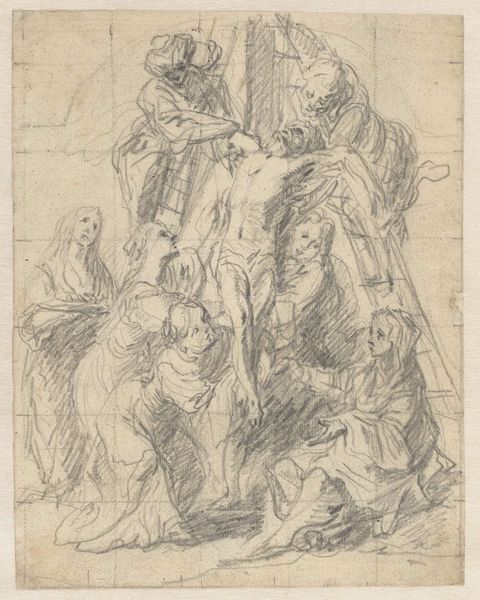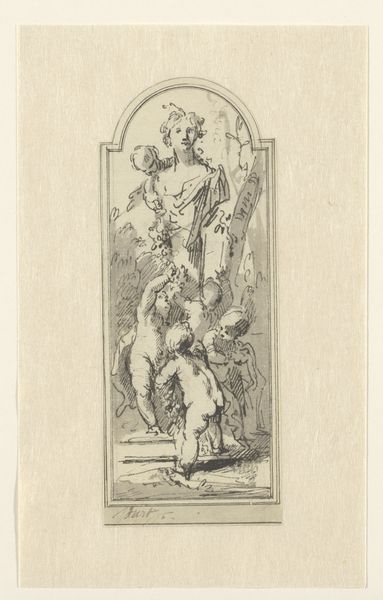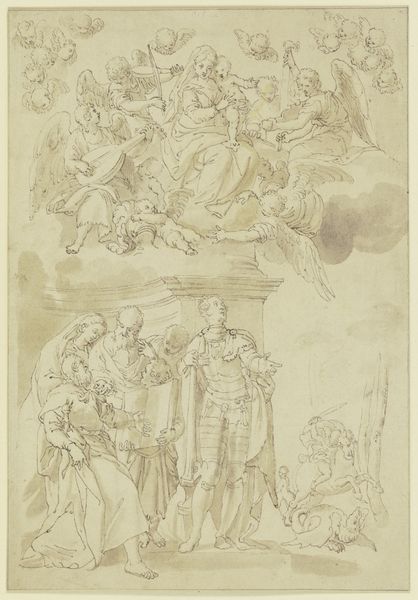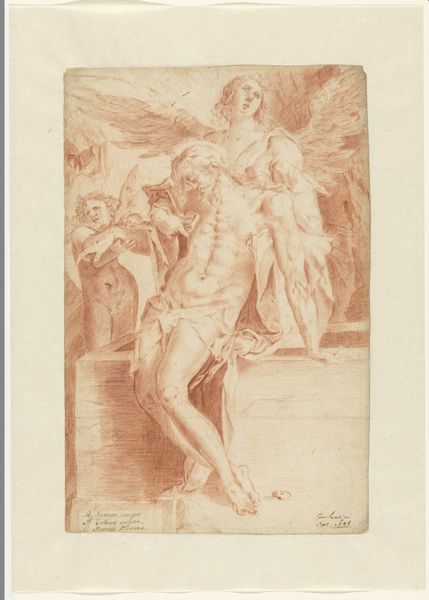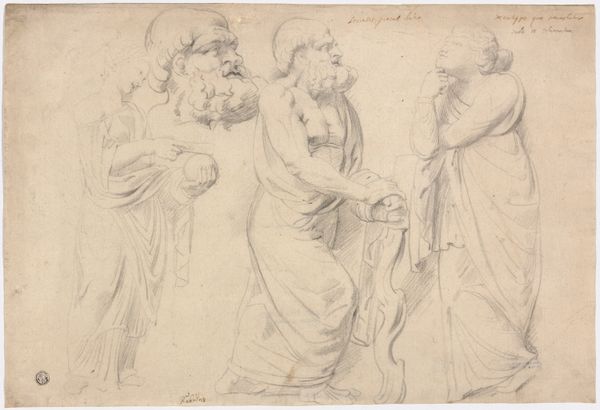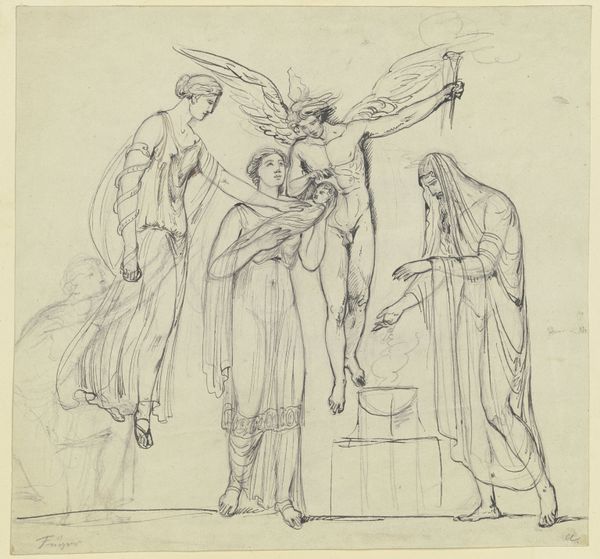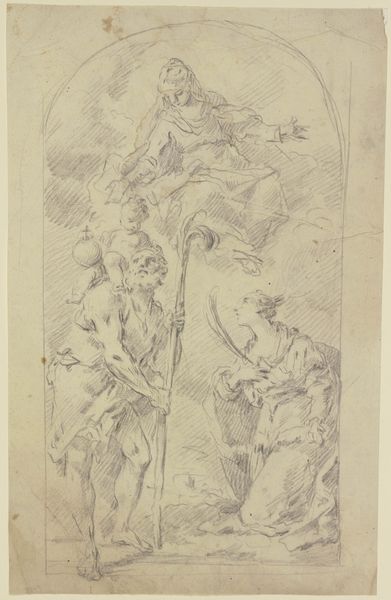
Schetsen voor een tafelstuk met mannelijke en vrouwelijke figuren c. 1835 - 1845
0:00
0:00
drawing, pencil
#
drawing
#
pen sketch
#
pencil sketch
#
figuration
#
pencil
#
history-painting
#
academic-art
Dimensions: height 291 mm, width 221 mm
Copyright: Rijks Museum: Open Domain
Editor: So, this pencil drawing is called "Sketches for a Table Centerpiece with Male and Female Figures," made around 1835 to 1845 by Jean-Jacques Feuchère. It's a busy composition of classical figures, sketched rather quickly, I think. How do you interpret this work? Curator: Well, first notice the recurring motifs—snakes, winged putti, classical figures. They're not just decoration; they are signifiers, drawing on a deep well of cultural memory. The snake, for instance, has a complex history. Is it a symbol of healing, wisdom, or perhaps temptation, a reference to the fall of man? Consider how its sinuous form is repeated in the architectural elements as well, linking nature and artifice. Editor: That's fascinating. I hadn't considered the snakes so carefully. What about the grouping of the three figures at the top? Curator: Indeed, that triad immediately calls to mind the classical ideal, the very essence of beauty, strength, and virtue celebrated across cultures. Consider why Feuchère, in 1835-45, is referencing such imagery. What does this visual language communicate about the patron, the intended setting for this centerpiece, and the broader cultural aspirations of the time? Are we seeing an echo of imperial Rome, a nod to Enlightenment ideals? Editor: I see, it's about understanding the cultural weight each symbol carries. Curator: Precisely. These symbols resonate through time, acquiring new layers of meaning, or reminding us of long-forgotten stories. Thinking about what past viewers would have brought to it, compared to today…that changes how we understand its purpose. Editor: This gives me a lot to think about regarding how artists utilize symbols and imagery. Thank you!
Comments
No comments
Be the first to comment and join the conversation on the ultimate creative platform.

